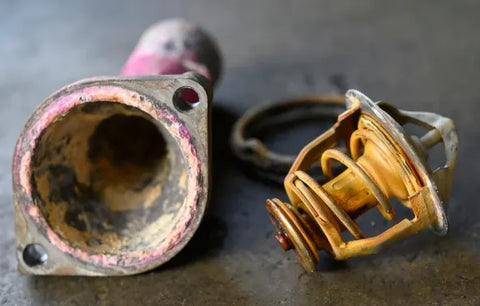Abstract
A car's thermostat regulates the flow of coolant through the engine. It is an important part of the operation of the engine. The symptoms of a broken thermostat are something you must be aware of. How to identify the symptoms of a broken thermostat? A bad thermostat is bad news because delayed repairs can kill the engine.
You should look for symptoms of these thermostats being broken and take immediate action when you find them malfunctioning. Some signs can come from different sources, such as a malfunctioning radiator, transmission belt, water pump, or fan. The only way to know for sure is to check the thermostat when your car displays the following characteristics:
1.Symptoms of a broken thermostat-- your car is overheating
A thermostat is a thermal control assembly mounted on a radiator hose. Under normal circumstances, when the antifreeze reaches the normal operating temperature, it will open the antifreeze to flow into the engine. Coolant regulates the heat of the engine. When the thermostat is off, the coolant cannot flow, causing the engine temperature to rise.
Overheating is one of the most common symptoms of a stuck thermostat. However, a faulty cooling system could also be to blame. You should examine both components to find the source of the problem.

2.Symptoms of a broken thermostat-- your car isn't heating up enough
If the thermostat is trapped in the on position instead of the off position, the engine temperature will be lower than normal. An open thermostat means that antifreeze is constantly being pumped into the engine, making it difficult for the car to reach the right temperature.
Despite driving the car for a few minutes, when the thermometer pointer hovers on the underside, it is one of the signs that the thermostat is broken.

3.Symptoms of a broken thermostat-- temperature changes
Thermostat malfunction symptoms may cause temperature fluctuations. Every time you drive, the engine temperature fluctuates up and down. It doesn't happen because the thermostat bit is stuck. After all, its faulty state sends out false readings. Therefore, the coolant in the radiator cannot flow normally, resulting in an error in the engine temperature change.
Conclusion
The symptoms of a malfunctioning thermostat can eventually lead to poor engine performance. This is most likely due to the failure of the equipment to control the temperature. When your car's fuel consumption decreases, diagnose the thermostat as well as other components.
If you notice any of these bad car thermostat symptoms, take immediate action. If you have enough mechanical knowledge, you can repair it or install a new one. Otherwise, take the car to a mechanic before the engine notices any trouble.
If you need to buy a thermostat, or you need to buy other mechanical accessories, you can contact us, we can provide you with professional answers and products.

FAQ:
1.How to check the thermostat?
Remove the thermostat from the engine, wash it, and heat it in hot water, measure the temperature with a thermometer with a range of 100 degrees Celsius, adjust the temperature according to the thermostat valve opening or side valve closing, and check whether it performance is good and whether the work is reliable. The thermostat is a valve that controls the flow path of the coolant and is an automatic temperature regulation device. It usually contains a temperature-sensing element that turns on and off the flow of air, gas, or liquid by thermal expansion or contraction. The main thermostat used is the paraffin thermostat. When the cooling temperature is lower than the specified value, the fine paraffin wax in the body of the incubator temperature is solid. The thermostat valve closes the channel between the engine and the radiator under the action of the spring, and the coolant returns to the engine through the water pump for a small circulation in the engine.
2.How do I change my thermostat?
First, find the location of the thermostat. Most thermostats are located on the right side of the engine, viewed from the front of the car, and connected to the radiator downpipe, and the thermostat assembly can be seen by removing the empty filter box.

Second, before disassembling the thermostat, remove the water pipe buckle and pull out the water pipe. Remove the screws from the thermostat, pull out the aluminum casing, and you can see the rusty thermostat core. Pull out the thermostat core, clean the joint, and replace it with a new one. If the gasket of the thermostat aluminum housing is aged, it must also be replaced.
Finally, add antifreeze to full level.
It should be noted that after replacing the thermostat, exhaust gas is required. There are two cases, with water pipes, the water pipe on the kettle does not need to manually exhaust (there are two pipes on the kettle, the thin tube above is the return pipe); No hose is brought back, and manual exhaust is required. The exhaust position is the highest point of the water pipe, and most radiator tanks have exhaust ports above them. The specific operation is: to open the exhaust port and start the engine. After the idle speed is stable, the fuel door will rapidly increase the water temperature until you see the antifreeze coming out of the exhaust port, at which time the exhaust is complete. Observe the water level of the kettle when venting, do not lack water. After the exhaust, still observe the liquid level of the kettle, less to fill antifreeze.
Relating reading:What is the purpose of a thermostat in an engine?
















